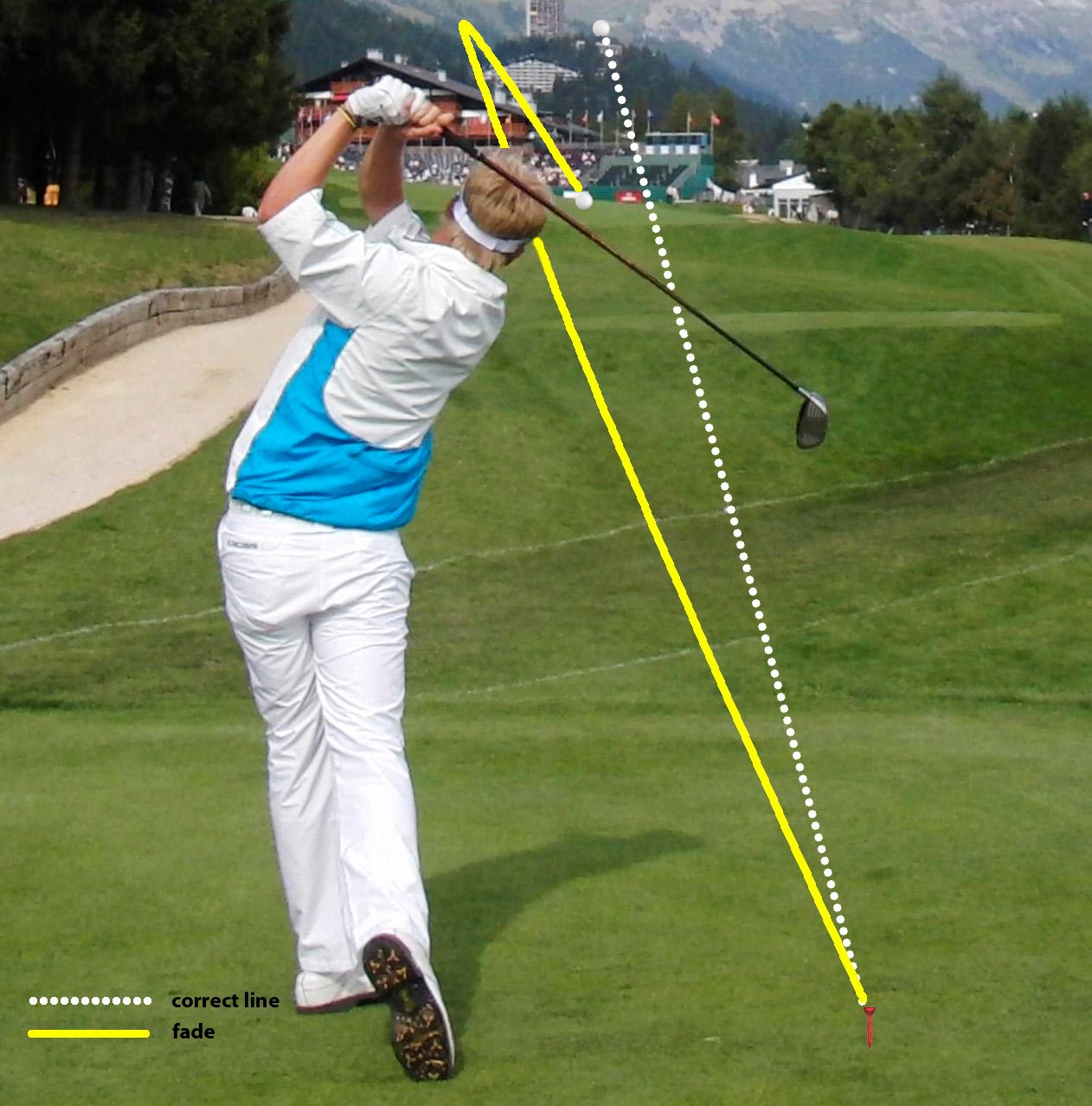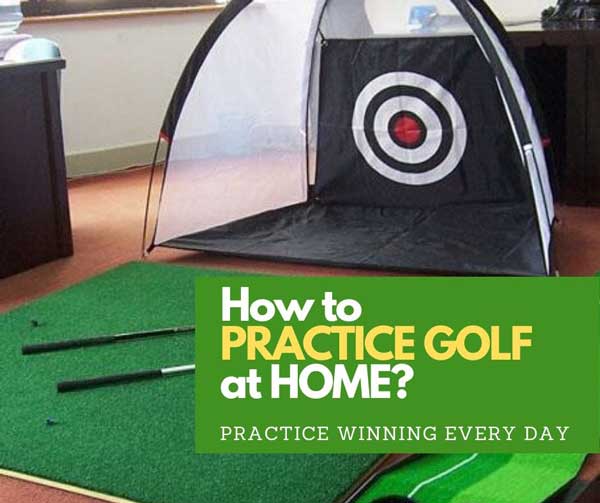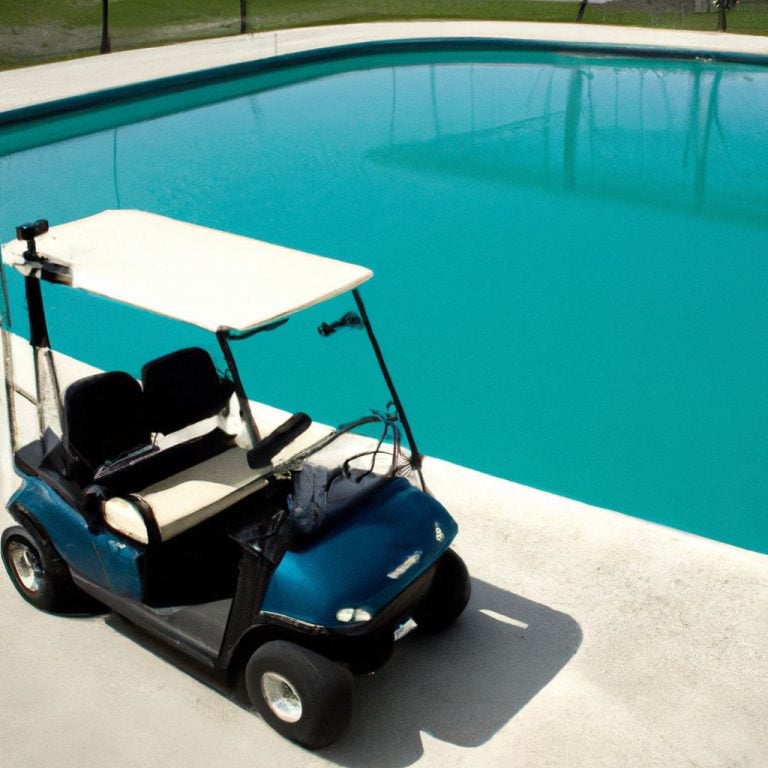Mastering the Fade: A Step-by-Step Guide on How to Hit a fade golf
Hitting a fade shot in golf can be a valuable skill to add to your repertoire on the course. While a fade shot may not produce the maximum distance, it offers greater control and accuracy, allowing you to navigate around obstacles and place the ball strategically. Understanding the fundamentals of the fade shot and knowing how to execute it properly can significantly improve your game.
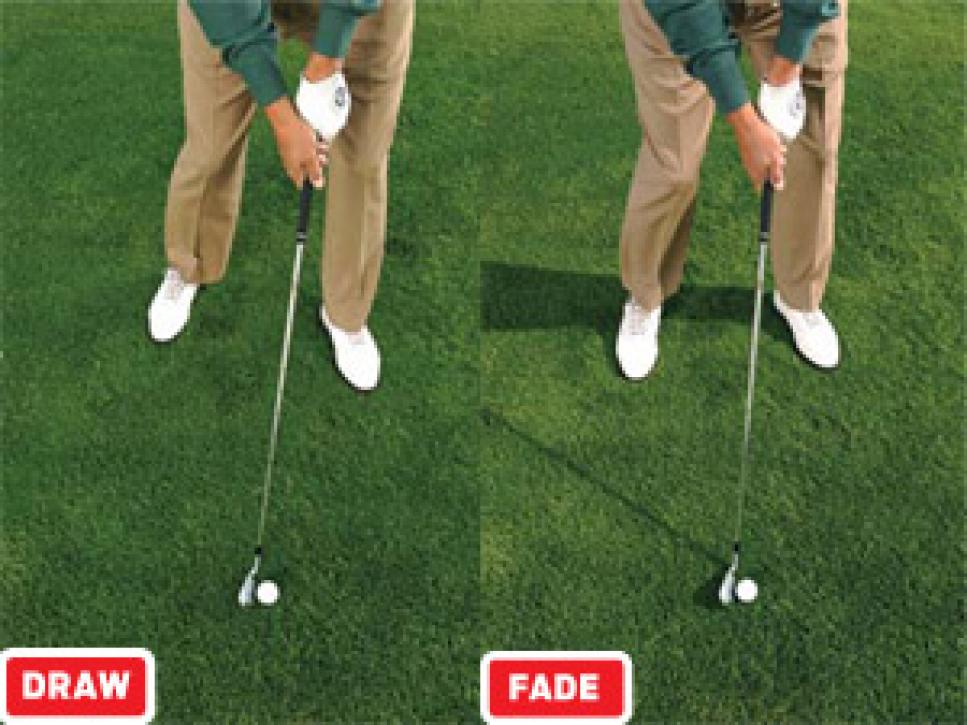
A fade shot refers to a controlled golf shot that curves slightly from left to right (for right-handed golfers). It is different from other shots like the draw or the straight shot, as it intentionally produces a slight left-to-right curve.
There are several reasons why you would want to hit a fade shot in golf. Firstly, a fade shot can help you maneuver around obstacles such as trees or bunkers that are on the left side of the fairway. hitting a fade shot can provide you with more accuracy and control, allowing you to consistently land the ball in the desired location.
To master the art of hitting a fade shot, it is important to follow a step-by-step guide. This includes proper alignment and setup, correct grip and hand positioning, opening the clubface, maintaining the right body position and swing path, and executing a smooth follow-through and finish.
While learning to hit a fade shot, it is common to make certain mistakes. Some of these mistakes include incorrect clubface alignment, improper swing path, and excessive body movement. Understanding these common pitfalls and learning how to avoid them will greatly enhance your ability to consistently hit a fade shot.
Finally, there are some useful tips and tricks that can help you improve your fade shot. These include practicing with alignment aids, experimenting with tee height to find the optimal ball position, and working on your grip pressure to achieve a more controlled shot.
By mastering the fade shot in golf, you can add a valuable technique to your game that will contribute to greater precision and strategic play on the course.
Key takeaway:
- Efficient use of space: Hitting a fade shot in golf allows you to control the direction of the ball, maximizing the use of the fairway and avoiding hazards.
- Advantages of a fade shot: The fade shot offers benefits such as better control, increased accuracy, and the ability to navigate tight fairways or position shots strategically.
- Essential steps to hit a fade: Proper alignment, grip, clubface positioning, body movement, and follow-through are crucial elements to master the fade shot and avoid common mistakes.
Understanding the Fade Shot in Golf
Understanding the fade shot in golf can greatly enhance your game and give you more control over your shots. Here are some key points to consider:
- The fade shot is a controlled golf shot that starts straight and then subtly curves to the right for right-handed players (left for left-handed players). It is a preferred shot for many professional golfers as it can help them navigate around obstacles and keep the ball in play.
- One crucial aspect of executing a fade shot is the grip. Position your hands slightly to the left (for right-handed players) or slightly to the right (for left-handed players) on the club. This promotes an open clubface, which encourages the ball to spin left to right.
- When setting up for a fade shot, align your body slightly open to the target line. This means your feet, hips, and shoulders should be aimed a little to the left (for right-handed players) or a little to the right (for left-handed players) of the target line. This alignment helps create the appropriate swing path to produce the fade.
- During the swing, focus on an outside-to-in swing path, meaning the club should approach the ball from slightly outside the target line and then swing across it. This swing path encourages the ball to spin from left to right, resulting in a fade.
- Timing is crucial in executing a fade shot. Make sure to full turn your shoulders on the backswing and then initiate the downswing by rotating your hips and unleashing your wrists at the right moment. This sequence of movements promotes the proper swing path and clubface position for a fade.
Understanding the fade shot in golf can give you more options on the course. Practice this shot on the driving range to establish consistency. With proper technique and practice, you can develop a reliable fade shot that adds versatility to your game.
What Is a Fade Shot?
A fade shot in golf, also known as a left-to-right shot, is a technique used by golfers to navigate obstacles or strategically position the ball on the fairway.
More info: SwingTrainer and GolfDigest
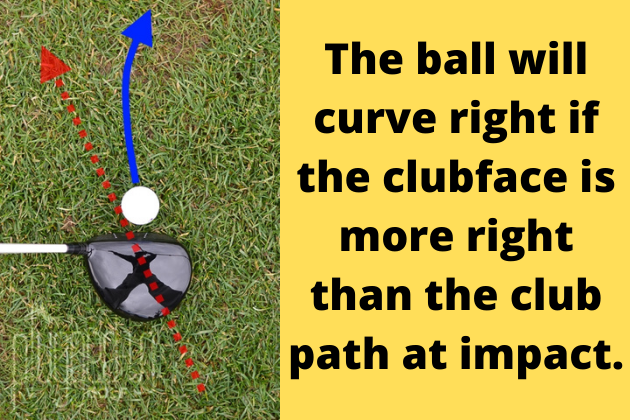
To understand a fade shot, consider the following key points:
- Clubface Position: The clubface at impact should be slightly open relative to the target. For a right-handed golfer, this means angling the face of the club slightly to the right. The open clubface generates sidespin on the ball, causing it to curve from left to right.
- Swing Path: The swing path is critical in shaping a fade shot. The club should approach the ball slightly from the outside and then travel left of the target at impact, creating an outside-in motion. When combined with the open clubface, this results in the desired left-to-right shot shape.
- Ball Position: Placing the ball slightly forward in the stance promotes a fade shot. Positioning it closer to the front foot encourages an outside-in swing path. It is recommended to experiment with different ball positions to find the most effective one for your game.
- Grip Pressure: Maintaining a light grip pressure throughout the swing is crucial for executing a fade shot. A relaxed grip provides better control and prevents the clubface from closing too much at impact, which could lead to a hook instead of a fade.
- Practice: Like any golf shot, mastering the fade requires practice and experimentation. Spend time on the driving range refining your technique. Try various clubface positions, swing paths, and ball positions until you find the optimal combination for producing the desired shot shape.
Remember, the fade shot is a valuable tool in a golfer’s repertoire, offering enhanced control and shot placement. With consistent practice and a solid grasp of the necessary techniques, you can confidently execute a fade shot when the situation demands it.
What Differentiates a Fade Shot from Other Golf Shots?
A fade shot is a golf shot that stands apart from other shots due to its unique ball flight and shot shape. It is characterized by a slight curve from left to right (for right-handed golfers) and a controlled trajectory.
The main factor that sets a fade shot apart from other golf shots is the direction in which the ball curves. During a fade shot, the ball initially travels on the target line or slightly left of the target (for right-handed golfers) before smoothly curving to the right. This is in contrast to a draw shot, which curves in the opposite direction, from right to left.
The clubface angle at the moment of impact is the key difference between a fade shot and other shots. During a fade shot, the clubface is slightly open in relation to the target line. This causes the ball to spin with a sidespin to the right, resulting in the desired fade shape.
Another important distinction lies in the swing path. In a fade shot, the swing path follows a slightly out-to-in trajectory, meaning the club approaches the ball from the outside and cuts across it slightly. This contributes to the left-to-right ball flight and helps create the fade shape.
By understanding how a fade shot stands out from other golf shots, players can strategically utilize it to their advantage on the course. The fade shot can be particularly advantageous when navigating specific obstacles or when there is trouble on the left side of the fairway. It allows golfers to maintain control over the golf ball flight and avoid the pitfalls of a hook or a slice, which can result in errant shots.
Why hit a fade shot?
Well, besides scaring away your opponents, it’s a sneaky way to navigate the golf course without getting caught in the rough.
When it comes to golf, have you ever wondered why hitting a fade shot can be advantageous? In this section, we’ll uncover the benefits and advantages of mastering the fade shot.
Get ready to discover how this technique can improve your game and give you an edge on the course. So, let’s dive into the fascinating world of fade shots and explore why they should be in every golfer’s repertoire. Leave your slice behind and embrace the power of controlled fade shots.
The Advantages and Benefits of Hitting a Fade Shot
The advantages and benefits of hitting a fade shot in golf are numerous. Here are the key advantages and benefits:
- Controlled ball flight: Hitting a fade shot allows you to have better control over the ball flight. With a fade, the ball starts to the left of the target (for right-handed golfers) and gently curves back to the right. This controlled flight allows you to aim for specific targets and navigate around obstacles on the course.
- Accuracy: The fade shot is known for its accuracy. By intentionally shaping the ball flight, you can hit more consistent shots and avoid hooks or slices. This precision comes in handy, especially when you need to hit the ball into tight fairways or small greens.
- Less distance loss: While a fade shot might not provide as much distance as a powerful draw shot, it generally results in less distance loss compared to hooks or slices. This means you can maintain distance while still keeping the ball in play.
- Improved course management: Having the ability to hit a fade shot opens up strategic options on the golf course. You can use the fade to navigate around trees, avoid hazards, or position the ball favorably for your next shot. It allows you to approach the game with a more strategic mindset.
- Consistency: Developing a reliable fade shot adds consistency to your game. Knowing that you can rely on this shot when you need it can boost your confidence on the golf course. Consistency leads to better scores and a more enjoyable golfing experience.
Step-by-Step Guide: How to Hit a Fade Shot
Looking to add some finesse to your golf game? In this step-by-step guide, we’ll unravel the secrets of hitting a spectacular fade shot. From aligning your body just right to perfecting your grip and hand positioning, we’ll cover it all. Get ready to open the clubface, master your body position and swing path, and finish with finesse. Let’s dive in and transform your fade shot into a powerful weapon on the golf course!
Step 1: Proper Alignment and Setup
Proper alignment and setup are crucial when it comes to hitting a fade shot in golf. Follow these steps to ensure your alignment and setup are correct:
- Proper Alignment and Setup: Position your feet – Start by positioning your feet shoulder-width apart. Your front foot should be slightly closer to the target line than your back foot. This aligns your body slightly to the left of the target (for a right-handed golfer).
- Proper Alignment and Setup: Aim your clubface – Align your clubface slightly to the right of the target. This open clubface position will help produce the desired left-to-right ball flight of a fade shot.
- Proper Alignment and Setup: Align your body – Align your body parallel to the target line. Your shoulders, hips, and feet should all be aligned parallel to the target line. Avoid aiming your body to the left of the target, as this can lead to a slice instead of a controlled fade.
- Proper Alignment and Setup: Adjust your ball position – Place the ball slightly forward in your stance. Position it just inside your front foot. This helps promote a more upward angle of attack, encouraging a shallow and controlled swing path.
By following these steps, you can achieve the proper alignment and setup needed to hit a fade shot in golf. Remember to practice this setup on the driving range before using it during a round.
Fun Fact: The fade shot is a valuable skill for golfers, as it allows them to shape their shots and navigate around obstacles on the golf course.
Step 2: Grip and Hand Positioning
- Hold the club with a neutral grip: To hit a fade shot successfully, it’s crucial to have the correct grip. Place your lead hand (left hand for right-handed golfers) on the club, with the base of your fingers gripping the handle. Your thumb should be positioned slightly to the right of the center. Your trail hand (right hand for right-handed golfers) should be placed on the club with the palm facing towards the target. The grip should feel comfortable and secure.
- Maintain light grip pressure: It is important to avoid gripping the club too tightly. Use a light grip pressure to allow for a free and fluid swing. This will help you maintain control and prevent unnecessary tension in your hands and arms.
- Align your hands correctly: Position your lead hand so that the “V” formed by your thumb and index finger points towards your trail shoulder. This promotes a neutral grip and allows for better wrist action during the swing. Your trail hand should mirror the position of your lead hand, creating a symmetrical grip.
- Keep your wrists relaxed: It’s important to maintain relaxed wrists throughout the swing to achieve better clubface control and accuracy. Avoid squeezing or tensing your wrists during the grip.
- Check for proper hand positioning: Take a moment to ensure that your hands are positioned correctly on the club before every shot. This will help you maintain consistency and improve your chances of hitting a successful fade shot.
To further enhance your grip and hand positioning, consider the following suggestions:
- Practice different grip styles to find the one that feels most comfortable and suits your swing.
- Experiment with grip thickness by using different-sized grips to find the right fit for your hands.
- Work on developing a consistent grip routine by rehearsing your grip before every shot during practice sessions.
Step 3: Open the Clubface
- Position yourself in front of the golf ball, with your feet shoulder-width apart.
- Align your body to the target line, ensuring that your shoulders, hips, and feet are parallel to the target.
- Hold the golf club with a relaxed grip, ensuring that your hands are in a neutral position.
- To open the clubface, gently rotate your hands slightly counterclockwise (for right-handed players) or clockwise (for left-handed players) before gripping the club.
- Make sure to maintain a light grip pressure, neither too tight nor too loose.
- Address the golf ball, placing it slightly forward in your stance.
- Take a smooth backswing, focusing on keeping the clubface square to the target line.
- As you transition into the downswing, maintain the open clubface position.
- Just before impact, rotate your forearms to square the clubface, aiming slightly left of the target (for right-handed players) or slightly right of the target (for left-handed players).
- Follow through with your swing, keeping your body balanced and your eyes on the ball.
Extra Suggestions:
- Practice opening the clubface gradually to find the right amount of rotation that produces the desired fade shot.
- Experiment with different grip positions and hand placement to see how they affect the clubface angle at impact.
- Work on developing a consistent swing tempo and rhythm to ensure proper timing when opening and closing the clubface.
Step 4: Body Position and Swing Path
Body Position and Swing Path are crucial aspects when it comes to hitting a fade shot in golf. The correct body position and swing path can greatly impact the direction and trajectory of the ball. Follow these steps to ensure proper body position and swing path:
- Address the ball: Stand with your feet shoulder-width apart and align your body parallel to the target line. Your front foot should be slightly open to the target, while your back foot remains perpendicular to the target line.
- Grip the club: Maintain a neutral grip with the clubface square to the target line. Ensure that your grip pressure is firm but not overly tight.
- Stance and posture: Keep your spine straight and tilt your upper body slightly away from the target. Flex your knees and hips, maintaining a balanced and athletic stance.
- Swing path: For a fade shot, the swing path should be slightly outside-to-inside. This means that during the downswing, the club should approach the ball from slightly outside the target line and then follow an inside path through impact.
- Body rotation: As you swing through the ball, focus on rotating your upper body toward the target. This rotation should be controlled and smooth, allowing the club to swing naturally along the desired swing path.
By following these steps and maintaining the correct body position and swing path, you can effectively hit a fade shot in golf. Remember to practice these techniques consistently to improve your skills and accuracy on the course.
Keep your eye on the ball, unless you want to join it in the rough.
Step 5: Follow-Through and Finish
The fifth and final step in hitting a fade shot in golf is the follow-through and finish. This crucial step ensures that your shot is executed properly and maximizes its effectiveness. Here is a step-by-step guide on how to perform the follow-through and finish:
- Continue your body rotation: As you swing the club through the ball, maintain the rotation of your body towards the target. Keep your hips and shoulders turning through the shot.
- Extend your arms: Fully extend your arms and wrists as you follow through. This extension will help create the necessary clubhead speed and control the direction of the shot.
- Maintain balance: Throughout the follow-through, maintain balance on your lead foot (the foot closest to the target). This will ensure a stable and controlled finish to your shot.
- Finish high: After striking the ball, allow your club to continue its natural path and finish high. Your club should ideally reach shoulder height or higher. This high finish helps to promote a controlled fade shot.
- Hold your pose: After completing the swing, hold your finish position and maintain steady balance for a moment. This will help reinforce proper technique and ensure a smooth and controlled shot.
By following these steps in your follow-through and finish, you can enhance your ability to hit a fade shot in golf. Remember to practice these techniques regularly to cultivate proficiency and consistency in your shots.
Common Mistakes and How to Avoid Them
When it comes to mastering the art of hitting a fade in golf, avoiding common mistakes is the key to success. In this section, we’ll dive into the nitty-gritty details of clubface alignment, swing path, and body movement. Each sub-section will uncover the most prevalent challenges golfers face and provide you with practical tips to overcome them. So get ready to fine-tune your technique and take your fade shots to the next level!
1. Clubface Alignment
Clubface alignment is a crucial factor in hitting a successful fade shot in golf. Here are some key aspects to consider:
- Correct grip: Ensure your grip is neutral and not too strong or weak.
- Alignment of the clubface: Position the clubface slightly open to the target line.
- Body alignment: Align your body parallel to the target line.
- Proper ball position: Place the ball slightly forward in your stance.
- Visualize the shot: Picture the desired flight path of the ball curving from left to right (for right-handed golfers).
The above steps will help you achieve the correct clubface alignment for a fade shot. Remember, practice and consistency are key to mastering this technique.
Pro-tip: To ensure proper clubface alignment, use alignment aids such as alignment sticks or a golf training aid specifically designed for this purpose. These tools can provide visual feedback and help you develop a consistent clubface position for your fade shots. Practice regularly with alignment aids to build muscle memory and improve your accuracy.
2. Swing Path
The swing path is a crucial element in executing a successful fade shot in golf. It determines the direction in which the golf ball will ultimately travel and allows players to intentionally shape their shots. To understand the swing path and its significance in hitting a fade shot, let’s examine the following table:
To hit a fade shot, the ideal swing path is the outside-to-in path. This path promotes an open clubface at impact, causing the ball to spin from left to right for right-handed golfers. Here are some key points to consider when working on your swing path:
- The outside-to-in swing path can be achieved by aligning your body slightly to the left of the target (for right-handed golfers) and ensuring that the clubhead approaches the ball from the outside.
- Visualize a path that starts outside the target line, swings diagonally across the ball, and finishes inside the target line. This mental picture will help you maintain the correct swing path.
- To develop the correct swing path, practice with a slow-tempo swing, focusing on maintaining the desired path throughout your swing. Gradually increase your swing speed as you become more comfortable.
- Film your swing or seek assistance from a golf instructor to analyze your swing path. They can provide guidance and help you make any necessary adjustments to achieve the desired fade shot.
By understanding the importance of the swing path and practicing its execution, you can confidently hit a fade shot that will help you navigate the golf course with precision and control. Remember, consistency and proper technique are key to mastering this shot and improving your overall game.
Get those hips swinging like Elvis to avoid any embarrassing golf moves.
3. Body Movement
When it comes to hitting a fade shot in golf, mastering the body movement is crucial for achieving the desired outcome. Here are some important considerations to keep in mind:
- 1. Body movement: To successfully execute a fade shot, maintaining a balanced stance is key. Begin by positioning your feet slightly wider than shoulder-width apart. This will provide a solid base and help you stay balanced throughout your swing.
- 2. Upper body rotation: During your backswing, focus on rotating your upper body, including your shoulders and torso, away from the target. This rotation creates the necessary space for executing a fade shot.
- 3. Engaging your hips: While keeping your lower body stable, allow your hips to turn slightly towards the target during the downswing. This controlled rotation promotes an inside-to-out swing path, which is vital for a fade shot.
- 4. Extended arms: It’s important to keep your arms extended and relaxed throughout the swing. Avoid excessive bending or twisting, as this can lead to inconsistent ball striking.
- 5. Generating clubhead lag: Focus on maintaining a lag between your hands and the clubhead during the downswing. This lag helps deliver the clubface in an open position at impact, facilitating the fade trajectory.
- 6. Follow-through: After making contact with the ball, continue your swing motion by extending your arms towards the target. This follow-through contributes to a controlled fade and ensures a smooth execution.
By incorporating these body movements into your swing, you can increase the chances of consistently hitting accurate and controlled fade shots on the golf course. Remember, practice and experimentation are key to mastering this technique. With time and dedication, you’ll be able to execute fade shots with confidence and precision.
Tips and Tricks to Improve Your Fade Shot
Looking to improve your fade shot in golf? Look no further! In this section, we’ve got some amazing tips and tricks lined up for you. From using alignment aids to experimenting with tee height and perfecting your grip pressure, we’ve got you covered. So, get ready to take your fade shot to the next level and leave your opponents in awe on the golf course!
1. Practice with Alignment Aids
When it comes to improving your fade shot in golf, practicing with alignment aids can be incredibly helpful. Alignment aids are tools or techniques that assist in ensuring proper alignment and positioning during your swing. Here are some steps to follow when practicing with alignment aids:
- Step 1: Use alignment aids during practice: Incorporating alignment aids into your practice sessions can greatly benefit your fade shot in golf. There are various options available, such as alignment rods, training sticks, and alignment mirrors. Choose the one that suits your preference and helps you visualize your desired swing path.
- Step 2: Set up the alignment aid: Position the alignment aid on the ground parallel to your target line. Make sure it is aligned with where you want your ball to go.
- Step 3: Position your feet: Step into your setup position while using the alignment aid. Align your feet and body with the aid, ensuring that they are parallel to the target line.
- Step 4: Align your clubface: Check the alignment of your clubface using the alignment aid. Ensure that it is pointing in the desired direction of your target.
- Step 5: Practice your swing: With the aid in place, make practice swings focusing on maintaining the correct alignment throughout your swing. Use the aid as a visual guide to ensure proper positioning and alignment.
By consistently practicing with alignment aids, you can develop muscle memory and improve your ability to consistently hit accurate fade shots. Remember to remain focused on your technique and make adjustments as needed to achieve the desired ball flight.
Tee it high, let it fly – experimenting with tee height can help you perfect your fade shot and avoid digging up divots.
2. Experiment with Tee Height
When it comes to hitting a fade shot in golf, experimenting with tee height can make a significant difference in your performance. To optimize your tee height for a successful fade shot, follow these steps:
- Begin with a standard tee height. Position the ball on the tee in a way that half of it extends above the clubhead at address. This serves as a solid starting point for developing your fade shot.
- Slightly lower the tee height. Try experimenting by reducing the tee height so that only a quarter of the ball is above the clubhead at address. This adjustment can help achieve a lower launch angle and increase backspin on the ball, which is advantageous for executing a fade shot.
- Incrementally raise the tee height. Conversely, you can test raising the tee so that three-quarters of the ball is above the clubhead at address. This modification can result in a higher launch angle and reduce backspin, ultimately contributing to a fade shot.
- Adapt the tee height based on the ball’s flight. Pay close attention to how the ball behaves with each adjustment in tee height. If you notice that your fade shot turns into a slice, even though you intended for a fade, try slightly lowering the tee. On the other hand, if the ball is not fading enough, consider raising the tee slightly.
- Refine the tee height. Once you discover a tee height that consistently produces the desired fade shot, practice using it to develop both consistency and familiarity.
Pro-tip: To ensure consistency in your fade shots, maintain a uniform tee height throughout your game. While experimenting with tee height can help you find the optimal launch angle and backspin for your fade shot, maintaining consistency is key to achieving success on the golf course.
3. Work on Your Grip Pressure
When it comes to hitting a fade shot in golf, one of the key factors to focus on is your grip pressure. Proper grip pressure can greatly impact your shot and help you achieve the desired fade. Here are some steps to work on your grip pressure:
- Work on your grip pressure: Ensure that your grip on the club is secure and firm. This will allow you to have control over the club throughout your swing.
- Avoid gripping too tightly: While it’s important to have a firm grip, gripping the club too tightly can limit your wrist action and impede your ability to execute a smooth fade shot. Maintain a relaxed grip pressure.
- Focus on consistent grip pressure: Keep your grip pressure consistent throughout your swing. Avoid any drastic changes or tightening of your grip during the swing motion.
- Experiment with different grip pressures: Take the time to experiment and find the grip pressure that works best for you. Everyone’s grip pressure preference may vary, so find the pressure that feels comfortable and allows you to execute an effective fade shot.
- Practice with different clubs: It’s important to practice your grip pressure with different clubs, as the length and weight of each club can affect your grip. Practice with your irons, woods, and wedges to develop a consistent grip pressure with each club.
By working on your grip pressure, you can enhance your ability to hit a successful fade shot in golf. Remember to practice regularly and experiment with your grip pressure to find what works best for you.
Some Facts About How To Hit a Fade in Golf:
- ✅ Many iconic players, including Ben Hogan, Jack Nicklaus, and Dustin Johnson, choose a fade over a draw in golf. (Source: The Left Rough)
- ✅ A power fade starts left of the target and fades back 3-10 yards, providing a reliable shot that requires less work and swing timing. (Source: The Left Rough)
- ✅ To hit a fade consistently in golf, it is important to have a slightly open clubface at impact. (Source: The Left Rough)
- ✅ The setup for hitting a fade in golf involves crowding the ball slightly, aligning left of the target, adjusting ball position forward, and being specific with alignment. (Source: The Left Rough)
- ✅ Adding a fade to your golf game can help you find more fairways and shoot lower scores. (Source: The Left Rough)
Frequently Asked QuestionsHow do I hit a fade in golf?To hit a fade, you can follow these steps:
- Move the ball up in your stance
- Have a slightly open stance
- Maintain the lag in your downswing
- Let your body and clubface remain passive through impact
- Swing through to your finish position with a more open clubface
What are some adjustments I can make to my setup for hitting a fade?To adjust your setup for hitting a fade:
- Move the ball up slightly in your stance
- Have a slightly open stance
- Make a ball-width difference in your setup
Do I need to change my swing to hit a fade?No, you don’t need to change your swing to hit a fade. The adjustments to your setup are sufficient to produce a fade shot.How can I hit a draw in golf?To hit a draw:
- Move the ball slightly back in your stance
- Allow for a naturally closed clubface through impact
- Encourage a right-to-left path
What are the two methods for hitting a fade shot in golf?The two methods for hitting a fade shot are:
- The traditional method, which requires greater control
- An easier method that involves starting the shot to the left of the target and curving it back to the right
What is the easier method for hitting a fade?The easier method for hitting a fade involves starting the shot to the left of the target and curving it back to the right. You should aim slightly left of the target and have an open clubface relative to the swing path.
| Swing Path | Description |
| Inside-to-Out | This swing path occurs when the clubhead approaches the ball from the inside of the target line and then moves outwardly after impact. |
| Square-to-Out | This swing path occurs when the clubhead follows a straight path along the target line without deviating to the inside or outside. |
| Outside-to-In | This swing path occurs when the clubhead approaches the ball from the outside of the target line and then moves inwardly after impact. |
